Unlock the secret to a fitter body with HIIT! Learn what is HIIT and how to maximize its benefits and transform your workouts in just minutes a day!
High-intensity interval training (HIIT) is a form of exercise consisting of short bursts of high-intensity activity followed by short rest periods. This kind of training has recently gained popularity, and many people have begun incorporating it into their workout routines. It’s not just for elite athletes anymore—the average person can also benefit from HIIT! This article will explain what HIIT is and how it can help you achieve your fitness goals.
Key Takeaways
- HIIT (High-Intensity Interval Training) combines intense exercise with short recovery periods.
- It helps burn more calories, improve cardiovascular health, and increase endurance.
- Maximize benefits by maintaining proper form, gradually increasing intensity, and allowing recovery time.
- Customizable for individual preferences and fitness levels.
- Save time while achieving weight loss and improved fitness with HIIT.
Definition of HIIT (High-Intensity Interval Training)
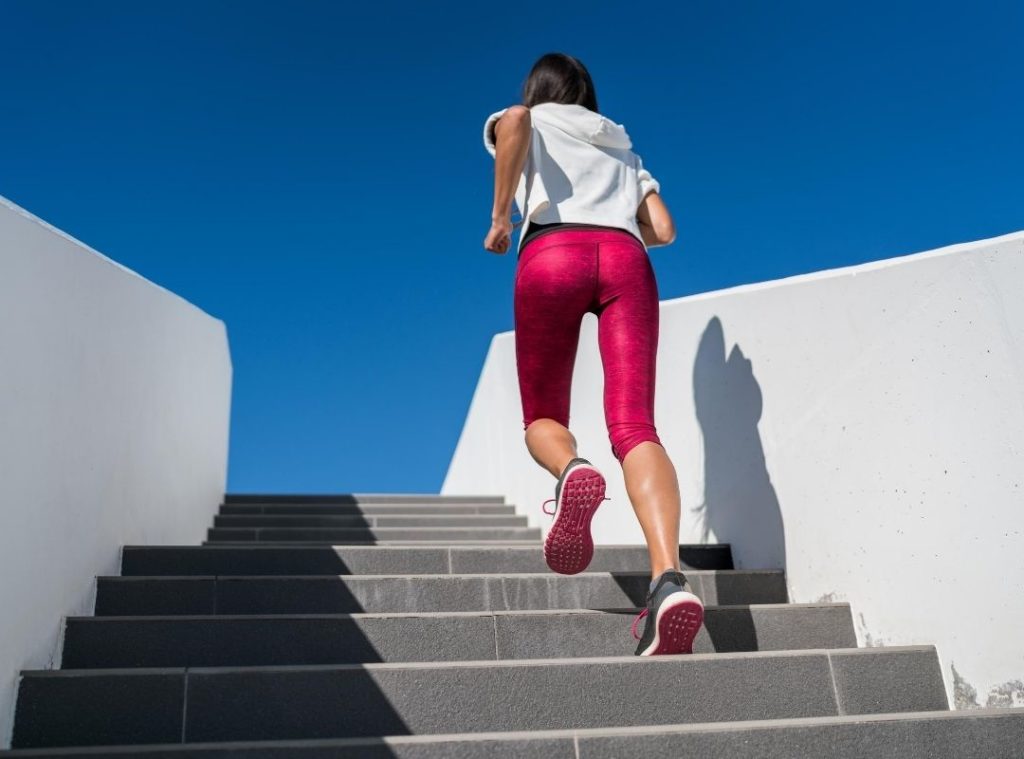
HIIT, or high-intensity interval training, is a type of workout that alternates between high and low-intensity periods. It’s also known as interval training and has been shown to improve cardiovascular fitness more effectively than steady-state cardio.
HIIT workouts are short but intense–typically lasting between 15 and 30 minutes–and can be done at home with minimal equipment or at the gym on machines like ellipticals and treadmills.
A brief history of HIIT
High-intensity interval training (HIIT) has been around for decades but is only recently gaining popularity in the fitness world. The first research on HIIT was published in 1982 by a Swedish physiologist named Dr. Bengt Saltin, who studied how short bursts of intense exercise could improve cardiovascular health.
Since then, HIIT has been used by many professional athletes to improve performance and reduce injury risk–and it’s also been used by military personnel as part of their training programs. Today, you can find HIIT classes at most gyms and studios across America!
Purpose of the article
This article aims to explain HIIT, its benefits, and how you can maximize those benefits.
I am a certified personal trainer and have worked in the fitness industry for over two years. I have a bachelor’s degree from UC Berkeley, where I majored in Exercise & Sport Science with an emphasis on health promotion/disease prevention. My background includes extensive experience as an athlete (tennis) and being active throughout high school and college. My goal is to help people reach their goals and to educate them about how best to achieve them!
HIIT has been shown to improve aerobic capacity by increasing the number of oxygen-rich red blood cells in our bodies which allows us to transport oxygen throughout our systems during exercise sessions more efficiently–this means that after doing HIIT workouts regularly, we will be able to perform better at any physical activity including running sprints on the track or playing basketball outdoors! The benefits don’t stop there, though…
What Is HIIT?
HIIT is a form of exercise that alternates between high and low-intensity periods. HIIT is the latest workout trend. For example, you might run at full speed for 30 seconds, then walk or jog slowly for one minute. This type of training is more effective than steady-state cardio in fat loss and weight management.
Explanation of HIIT and its concept
HIIT is a form of exercise that alternates between periods of short, intense anaerobic exercise and rest. It is more effective than steady-state cardio in improving cardiovascular health, increasing fat loss, and improving insulin sensitivity.
HIIT can be done with equipment (such as running on a treadmill or elliptical trainer) and free weights or bodyweight exercises like jump squats or burpees. The goal is to reach your maximum heart rate during each interval while keeping it under control, so you don’t overdo it!
Understanding the Essence of HIIT
High-Intensity Interval Training (HIIT) has revolutionized the fitness realm with its effectiveness and efficiency. It’s not merely a trend but a profound exercise methodology that enhances cardiovascular fitness, burns calories, and improves overall health within a short period. HIIT embodies short, intense bursts of exercise, followed by brief recovery periods, keeping the heart rate elevated, maximizing calorie burn, and increasing metabolic rates.
The Historical Backdrop of HIIT
HIIT isn’t a novel concept. Its roots trace back decades, evolving and adapting to various fitness landscapes over time. Initially embraced by athletes and fitness enthusiasts seeking performance enhancement and efficient training modalities, HIIT has transcended these realms, becoming a staple in mainstream fitness routines. Its adaptability and versatility make it a suitable fitness approach for individuals across different fitness levels, promoting enhanced cardiovascular health, fat loss, and muscle development.
Comparison to other types of exercises
- HIIT is more effective than steady-state cardio.
- HIIT is more effective than weight training.
- HIIT is more effective than low-intensity cardio, such as walking or jogging on the treadmill at a steady pace for 30 minutes or longer (this can be great for beginners who are just starting and want to get into shape).
Benefits of HIIT Interval Training.
HIIT workouts can help you lose weight.
HIIT workouts are great for burning fat because they work your muscles harder than steady-state cardio, which means that your body will need to use more energy (read: burn more calories) to recover and perform the next set of exercises. Studies show that HIIT also improves insulin sensitivity, so it’s a good idea if you’re trying to manage type 2 diabetes or metabolic syndrome–conditions associated with being overweight or obese.
HIIT workouts can help you build muscle.
Suppose you’re trying to build lean muscle mass. In that case, HIIT is an effective way of doing so because it forces our bodies into an anaerobic state where we break down glycogen stored within the muscles as well as the fat held throughout our body; this creates an environment where new tissue can be built up quickly because there’s no oxygen around during training sessions like these! This type of training also increases EPOC (excess post-exercise oxygen consumption), which helps us burn additional calories even after we’ve finished working out!
How to maximize the benefits of HIIT
HIIT is a great way to burn fat and increase your fitness level. It’s also a great way to get the most out of your workout time and improve your overall health and mental health. Here are some tips for maximizing HIIT benefits:
- Choose an exercise that involves both upper-body and lower-body movements, such as running or cycling on a stationary bike. This allows you to use more muscles during any session than if you did only one type of movement (like running).
- Choose exercises with similar cadences between sets so they flow smoothly together without much rest between each group; this allows maximum efficiency when working out at high intensities!
Proper warm-up and cool-down
- Proper warm-up and cool down
- Stretching and foam rolling are essential for a HIIT workout. They should be done before you start the workout and after you finish it–you’ll be surprised at how much this helps with soreness!
- A proper warm-up should include some light cardio exercises, like jogging in place or walking on the treadmill at a moderate pace for 5-10 minutes. This will get the blood flowing to your muscles and prepare them for what’s next: intense exercise!
- A proper cool-down includes slowing down gradually until your heart rate is average while still moving around (i.e., not standing).
Incorporating variety in HIIT workouts
HIIT workouts are great, but they can get boring after a while. Incorporating variety into your routine is the key to making HIIT workouts more fun and effective.
Variety in exercise allows your body to adapt to different activities and muscle groups, which means that you’ll be working out all of the muscles in your body (including those hard-to-reach ones). This will also help prevent overuse injuries by giving some muscles rest while others are worked out during each workout session. Finally, mixing things up helps keep things interesting–this is especially important if you’re trying to stick with an exercise program for long periods!
Understanding intensity levels and adjusting accordingly
- Intensity levels are relative. If you’re starting, a level 5 workout might feel like a breeze compared to what your friend does on his or her HIIT training days.
- Intensity levels depend on the exercise you’re doing. If you’re running at 6 miles per hour (mph), your heart rate will likely be higher than if you were cycling at 12 mph–even though both would be considered level 5 workouts!
- Intensity levels depend on your fitness level and goals. You might find that when attempting level 4 exercises such as burpees or jumping jacks, even though they seem easy enough for someone else in the class with more experience, they leave me exhausted after just five minutes of working out!
- Personal preference comes into play too: Some people prefer working out alone while others prefer group classes; some enjoy high-intensity interval training (HIIT) while others prefer longer cardio sessions where their heart rate stays steady throughout; some want quick bursts of activity followed by periods of rest while others want continuous motion without breaks between sets/reps during each round.”
Proper nutrition and hydration

Proper nutrition and hydration are essential for all athletes, but they’re especially crucial when doing high-intensity interval training. The body needs fuel to sustain itself during a workout, so it’s essential to ensure that you eat enough before and after HIIT sessions.
Here are some tips for improving your nutrition:
- Eat foods rich in carbohydrates about an hour before your workout so that they have time to digest by the time you begin exercising. Carbohydrates provide energy through glucose molecules stored in muscle tissue or liver glycogen (a substance formed from excess carbohydrates).
- Drink water throughout your HIIT session; aim for 1/2 cup every 15 minutes or so–this will help keep dehydration at bay! Dehydration can lead to dizziness or nausea during exercise, which could hinder overall performance.
Consistency and progress tracking
If you want to see results, you must be consistent. You can’t just do HIIT once and expect to see any improvement in your fitness level. You have to keep up with it regularly and track your progress so that if something isn’t working for you (or if something does), you can change it up accordingly.
If you have a friend who does HIIT with you, that’s even better! You can push each other to go harder and farther. If not, consider using a smartphone app like Map My Run or Endomondo to keep track of your progress. It allows me to track what exercises I did during each session and keeps me motivated by showing me how far along I am toward reaching my goals!
HIIT Workouts for Beginners
If you’re new to HIIT, starting with bodyweight exercises and cardio is best. You can also include resistance training if you have access to a weightlifting gym or equipment but don’t feel like you need it to get started. Here are some examples:
- Bodyweight squats (8-10 reps)
- Bodyweight lunges (8-10 reps per leg)
- Pushups (as many as possible in 20 seconds)
Once your form is on point and these moves feel comfortable for you, try adding more advanced variations of each exercise:
- Jump squats instead of regular squats; jump lunges instead of regular lunges; clap pushups instead of regular ones
Bodyweight exercises
Bodyweight exercises are a great way to get started with HIIT because they require minimal equipment and can be done anywhere. Here are some examples:
- Pushups – A classic exercise that targets your chest, triceps, and shoulders.
- Plank – An intense core workout that works your back muscles, abs, and glutes.
- Squats – Squats work the thighs, buttocks, and hamstrings (back of thighs). You’ll also use other muscles like calves as you lower yourself into a squat position from standing up straight–you’re engaging them while holding yourself steady in place!
Cardiovascular exercises
Cardiovascular exercises are any activity that gets your heart rate up. This can be a simple as walking or running on the treadmill, or it could mean more intense workouts like sprinting or weightlifting.
It’s important to remember that HIIT is only one part of an overall exercise program–you still need to incorporate cardiovascular exercises into your routine!
To maximize the benefits of HIIT, try doing it three times per week for 20 minutes at a time.
Resistance training
Resistance training is a great way to build muscle, but it’s also an effective way to improve your cardiovascular fitness and burn fat. It can be done with body weight or by using dumbbells or kettlebells. You can perform resistance exercises as part of your HIIT routine, or you can do them separately as part of your regular workout routine.
Ideally, suppose you’re going to incorporate resistance training into your HIIT routine (or any other type of exercise). In that case, the intensity should be high enough to make the muscles burn slightly–but not so high that it’s uncomfortable or causes injury! If you’re unsure whether or not an exercise is proper for you, start slowly and increase intensity over time until reaching an optimal level that challenges but doesn’t overwhelm the body’s ability to recover between sets/reps.
The best way I’ve found so far is by testing different weights and resistance levels until I find one where I feel like my muscles are getting worked but not completely exhausted after each set; this helps ensure both safety and maximizing results from each session!
Examples of HIIT workouts for each category
Now that you know what HIIT is, let’s look at some examples of HIIT workouts for each category.
- Cardiovascular exercises: sprinting, running stairs, cycling, and swimming are great options.
- Bodyweight exercises: burpees (a full-body exercise), pushups, and planks are all great options here too!
- Resistance training: lifting weights/resistance bands are good ways to build muscle mass while keeping your heart rate up. This also has benefits beyond just improving your fitness level–it can help prevent osteoporosis later in life!
How does HIIT affect Blood Glucose?
Extreme exercise promotes endocrine. It also improves defense reactions that are similar to those generated by:
- low blood oxygen,
- high blood co2,
- acidosis,
- high body temperature,
- dehydration,
- low blood sugar level,
- physical injury, and
- psychological stresses.
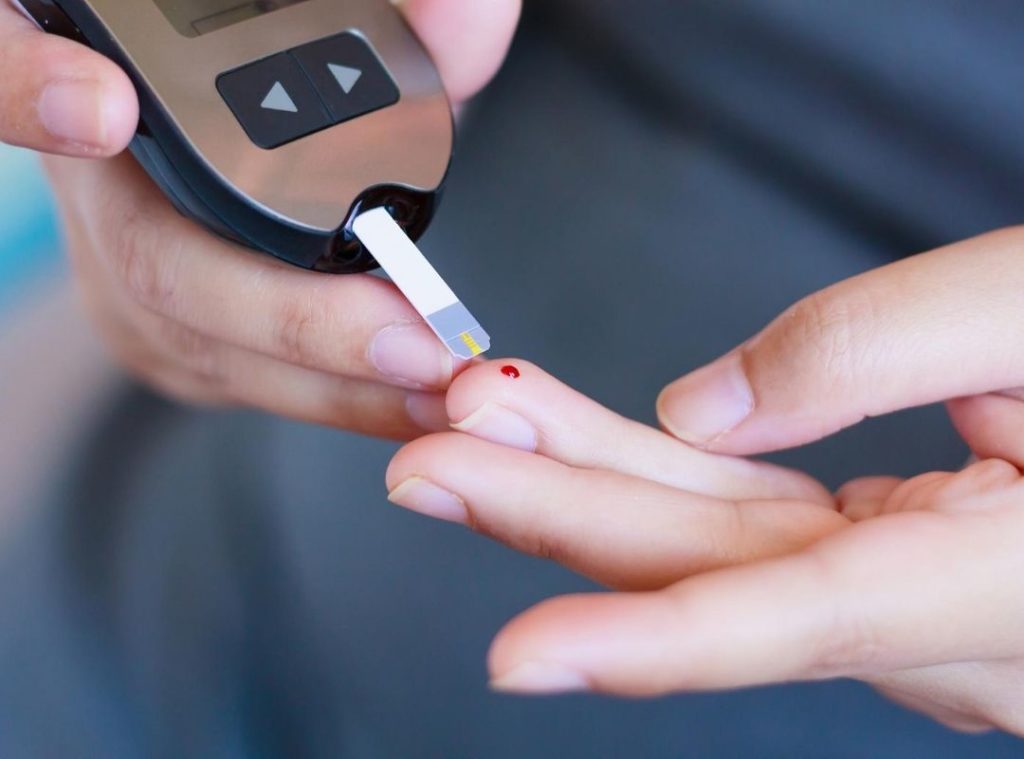
HIIT programs lasting less than 12 weeks lower blood glucose. However, it enhances insulin resistance higher than standard exercise. A high-intensity workout may particularly benefit those at risk for type 2 diabetes.
Some experiments, specifically in individuals with type 2 diabetes, have demonstrated HIIT performance for improving blood sugar levels. Nevertheless, research in healthy individuals suggests that HIIT may have the ability to improve insulin resistance much more than typical constant exercise.
High-intensity interval training may be especially advantageous for those requiring decreased blood sugar and insulin resistance. These enhancements have been seen in both healthy and balanced and even diabetic person individuals.
Just how does HIIT influence High Blood Pressure?
A large amount of research study shows that it can reduce heart price and also high blood pressure in obese and even overweight individuals, that typically have high blood pressure (One research discovered that eight weeks of HIIT on a stationary bicycle decreased high blood pressure as high as regular constant endurance training in adults with high blood pressure.
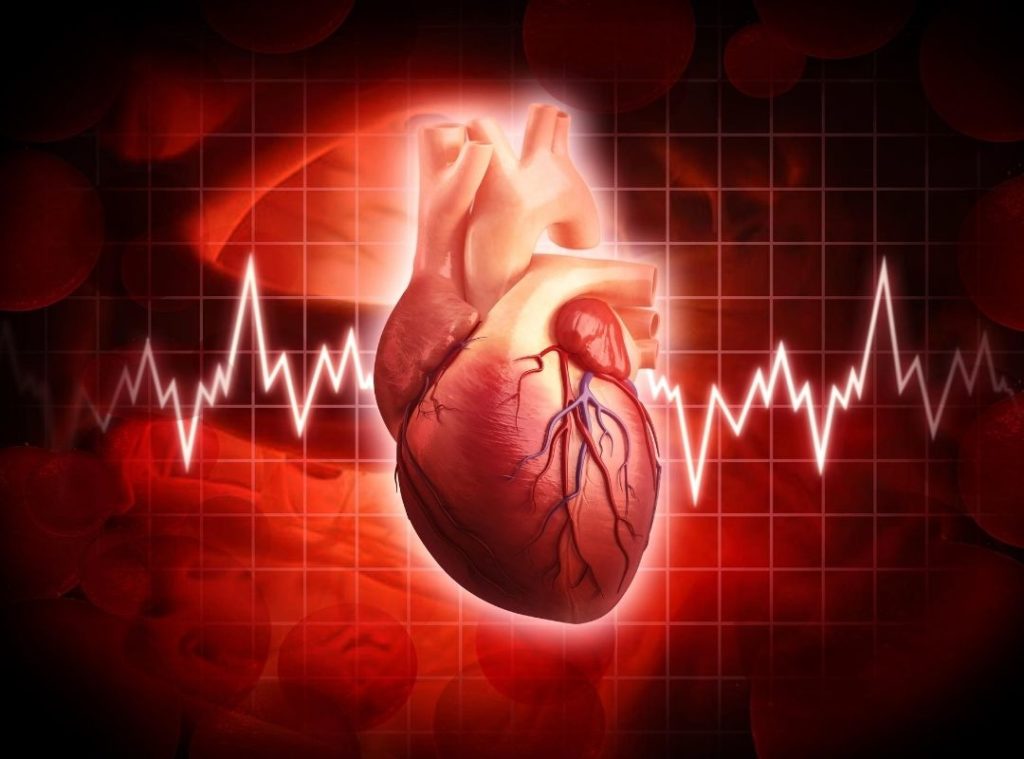
In this research, the endurance training group worked out four days per week for 30 minutes per day, but the HIIT team only worked out three times each week for 20 mins each day.
Some researchers have found that HIIT might even reduce blood pd moderate-intensity workouts (Nevertheless, it shows that tensity exercise does not generally transform high blood pressure in normal-weight people among people with cardiovascular disease normal high blood pressure.
HIIT can decrease blood pressure and heart rate, mainly in overweight or obese people with hypertension.
How does it vary with Cardiovascular Exercise?
We now have more than one decade of information revealing HIIT returns the precise same health and wellness benefits as long-lasting cardio exercise virtually, as well as in some teams or populations, it works much better than a conventional cardio workout, claims Todd Astorino, a teacher of kinesiology at The golden state State College, San Marcos, that has published higher than a loads research study papers on HIIT.
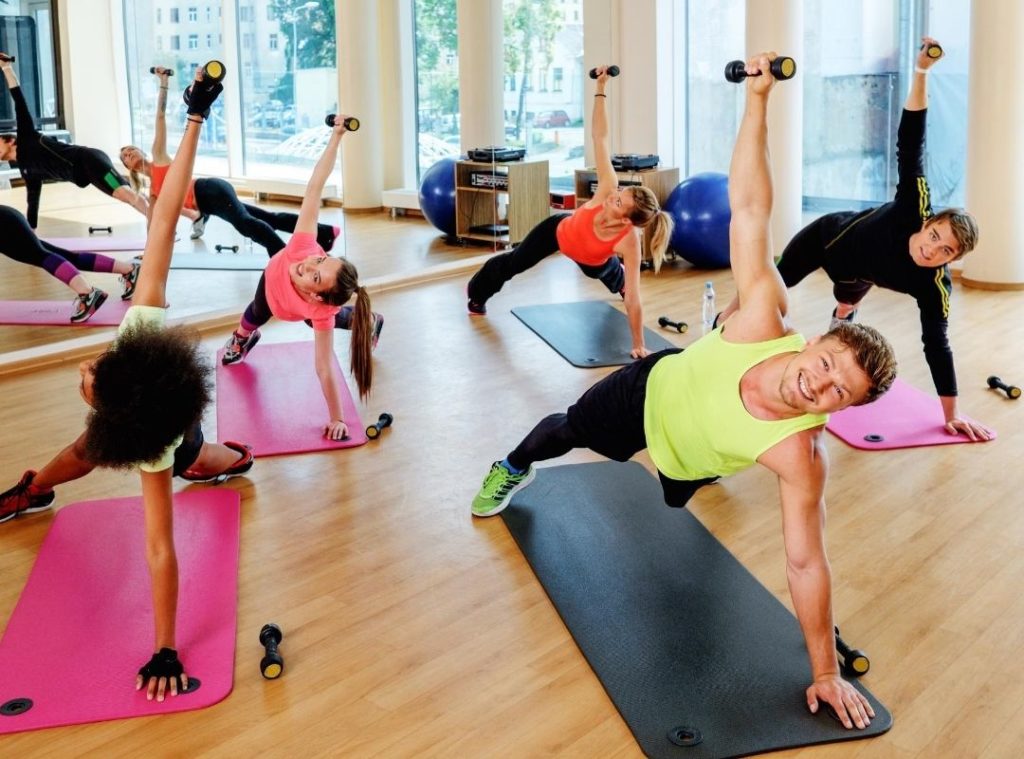
It doesn’t simply work for the young, fit, and healthy. HIIT improves cardiorespiratory health and fitness almost twice as much as longer stretches of moderate-intensity running, biking, or other cardio exercises among people with cardiovascular disease. One review research ended.
Precautions and Risks
HIIT is a very intense form of exercise that should only be performed by those who are in good health and have been cleared by a doctor.
Before beginning any new workout routine, it’s essential to check with your physician. If you have any preexisting conditions or injuries that HIIT could aggravate, please consult with them first.
In addition to speaking with your doctor before starting any exercise program, there are several precautions you should take before beginning HIIT:
- Drink plenty of water before and after each session to stay hydrated during your workout and afterward when recovering from it.
- Wear comfortable clothes and shoes for increased safety while working out (you don’t want anything getting caught on equipment) and comfort during longer sessions where standing around becomes necessary (such as waiting in line). It’s also helpful if they’re dark colors so they don’t show sweat stains too quickly!
Contraindications for HIIT
While HIIT is a great way to get in shape, it’s not for everyone. Here are some contraindications:
- People with low fitness levels should not do high-intensity exercise because they’re more likely to injure themselves.
- Those with a history of heart disease should avoid high-intensity activity due to the risk of heart attack or stroke.
- Pregnant or breastfeeding women should also avoid intense workouts due to increased blood flow and potential damage caused by lactic acid buildup in their muscles (which could cause harm).
- Underweight people may want to consult their doctor before starting an intense exercise routine because rapid weight loss can put them at risk for malnutrition and other health issues like osteoporosis if done improperly
Importance of listening to your body
In addition to these three elements, a fourth and final one is perhaps the most important. It’s something that many people forget or ignore: listening to your body.
When you’re exercising, it’s easy to get caught up in what you’re doing and how well (or poorly) it’s going. But if there’s one thing we can learn from HIIT research, it’s that this type of training requires an incredible amount of focus on self-care–and taking care of yourself doesn’t stop once the class is over! As we’ve seen above, there are several ways that HIIT workouts can impact our bodies; some may be good for us, while others might cause harm if ignored or overlooked by an athlete who isn’t paying close attention during their workout session(s).
To maximize the benefits associated with high-intensity interval training programs like CrossFit or Insanity Max:30®, it helps significantly if athletes listen carefully for signs of trouble before pushing themselves too hard during each session so they don’t end up injuring themselves later down the road due to poor planning ahead.
Seeking professional advice before starting HIIT
Before you begin any exercise program, it’s essential to consult your physician. The following are some questions you should ask:
- Are there any medical conditions that would prevent me from participating in this type of workout?
- What exercises should I avoid during pregnancy or recovering from surgery?
- Am I at risk for heart disease and/or high blood pressure; if so, what precautions should I take when exercising at an intensity level above my current fitness level (e.g., not going too hard)?
After getting your doctor’s approval and understanding all the risks involved with HIIT workouts, here are some things they’ll want to know about how often you’re working out:
Recap of the benefits of HIIT
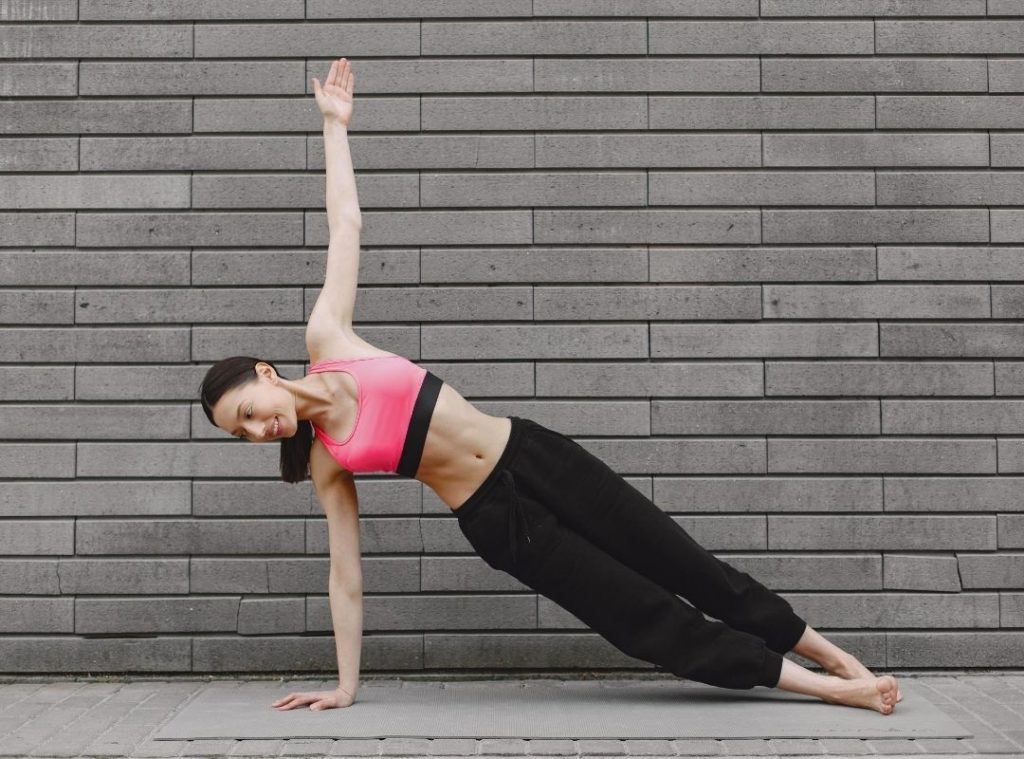
HIIT is a great way to improve your overall health and can help you lose weight by increasing the number of calories you burn. It also has numerous benefits for mental health, including improving mood and reducing stress levels.
HIIT helps improve aerobic fitness by increasing the amount of blood that flows through your heart during exercise. This means more oxygen is available in your body, allowing you to work out harder without getting tired as quickly. In addition to improving aerobic fitness, HIIT may increase strength or power (the ability to produce force). The increased blood flow also means that muscles get more nutrients throughout the workout, leading to better muscle recovery after each session!
Maximizing the Benefits of HIIT
To reap the maximum benefits of HIIT, consistency, variety, and intensity are pivotal. Incorporating a diverse array of exercises, such as bodyweight movements, cardiovascular activities, and resistance training, can prevent monotony, enhance muscle engagement, and promote a comprehensive fitness improvement. Tailoring the intensity to align with individual fitness levels, while progressively challenging the body, can foster continuous improvement, prevent plateaus, and mitigate the risk of injuries.
HIIT and Its Impact on Health
HIIT transcends beyond being a mere physical activity, influencing various health aspects, including blood glucose levels and blood pressure. Its capacity to enhance insulin sensitivity makes it a powerful tool in managing and preventing type 2 diabetes. Moreover, HIIT has shown a significant impact on cardiovascular health, improving heart rate, reducing blood pressure, and enhancing overall cardiovascular fitness.
Crafting a HIIT Routine for Optimal Results
Embarking on a HIIT journey necessitates a well-structured plan, ensuring that the exercises align with individual fitness levels and goals. Starting with basic movements and gradually escalating to more advanced exercises can foster adaptability, strength, and endurance. Incorporating adequate warm-ups, cool-downs, and recovery periods is essential to optimize performance, prevent injuries, and promote muscle recovery and growth.
Final thoughts
HIIT is a great way to get in shape, and it’s fun too. You can do HIIT workouts at home or on the road. And they only take about 20 minutes — so they’re perfect for those who don’t have much time but want results!
HIIT workouts are short but effective: The intensity of your workout will help burn fat quickly and improve cardiovascular fitness by increasing your heart rate (and thus calorie expenditure) throughout each session.
Start incorporating HIIT into your routine
HIIT is an excellent choice if you’re looking for a way to get fit and tone up. It’s short and intense so that you can quickly get in shape.
HIIT workouts are also great for burning fat because they raise your metabolism while building muscle mass. This means that even when your body is resting between exercises, it’s still burning calories at an accelerated rate!
HIIT workouts can be done at home with little or no equipment (ensure you have a timer). If you have access to weights or resistance bands, those will increase the effectiveness of these exercises even more so than regular cardio would do on its own–but if not, don’t worry about it! Just focus on getting started today: 10 minutes three times per week will give tremendous long-term results!
Conclusion
I hope this article has given you a better understanding of what HIIT is and how it can help you reach your fitness goals. As I mentioned, there are many benefits to adding HIIT into your routine: improved cardiovascular health, increased metabolism and fat-burning capabilities, better muscle tone/strength development, and more! If you’re looking for more information about different types of workouts or exercises to do at home, then check out the resources below:
References
HIIT (High Intensity Interval Training) – The Nutrition Source
HIIT is a type of interval training exercise. It incorporates several rounds that alternate between several minutes of high intensity movements to significantly increase the heart rate to at least …
High intensity interval training (HIIT): Benefits and how to start
Research suggests that HIIT workouts may be better than moderate intensity exercise for “maximizing health outcomes.” HIIT offers many benefits, including: Reducing body fat
7 Benefits of High Intensity Interval Training (HIIT) – Healthline
HIIT can reduce blood pressure and heart rate, primarily in people with overweight or obesity who also have high blood pressure. 7. HIIT can reduce blood sugar HIIT programs lasting …
What Is HIIT, and How It Improve Your Workouts? | SELF
Because HIIT spikes your heart rate during those hard efforts, it can also help contribute to weight loss (if that’s your goal), since you’ll be burning more calories per minute …
5 Benefits Of HIIT – How To Do High-Intensity Interval Training
HIIT keeps your brain in shape. Studies have shown that regular HIIT exercise can boost your memory and make you sharper in everyday decision-making.
14 HIIT Benefits (7 Reasons to Try High-Intensity Interval) – MedicineNet
High-intensity interval training (HIIT) is becoming an increasingly recognized and well-liked method of training with several benefits, including: HIIT is better at burning calories and helps shed unwanted pounds.
Timing Your HIIT Intervals: How To Maximize The Benefits Of High …
High-intensity interval training (HIIT) is an effective way to get in shape and improve your cardiovascular health, but timing your HIIT intervals correctly can be tricky.
HIIT is changing the way we work out, here’s the science why it works
Its popularity is welcome news, because HIIT has been shown to improve fitness, cardiovascular health, cholesterol profiles and insulin sensitivity, which helps stabilise blood glucose or sugar levels
As a veteran fitness technology innovator and the founder of GearUpToFit.com, Alex Papaioannou stands at the intersection of health science and artificial intelligence. With over a decade of specialized experience in digital wellness solutions, he’s transforming how people approach their fitness journey through data-driven methodologies.
